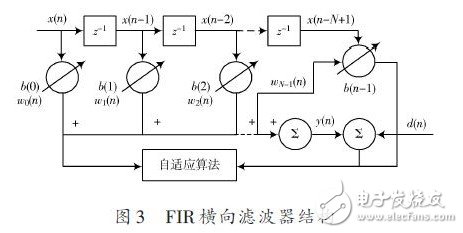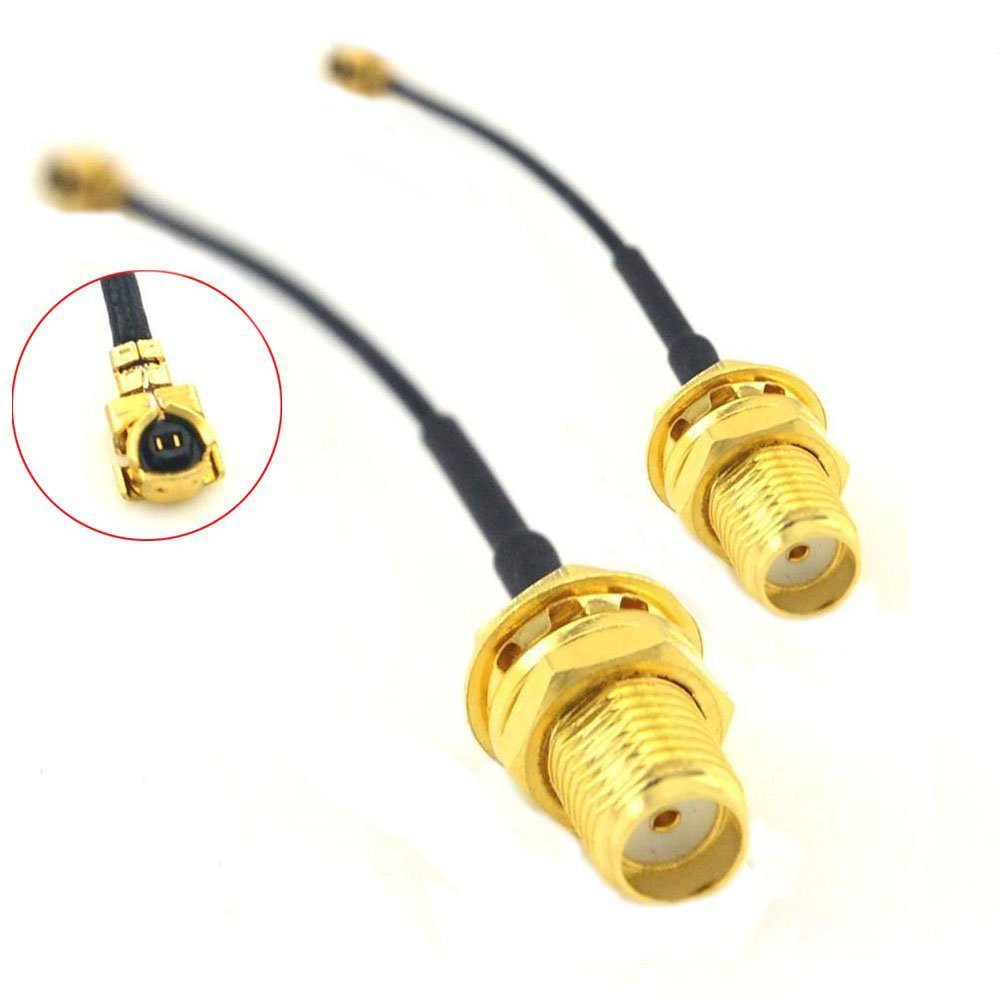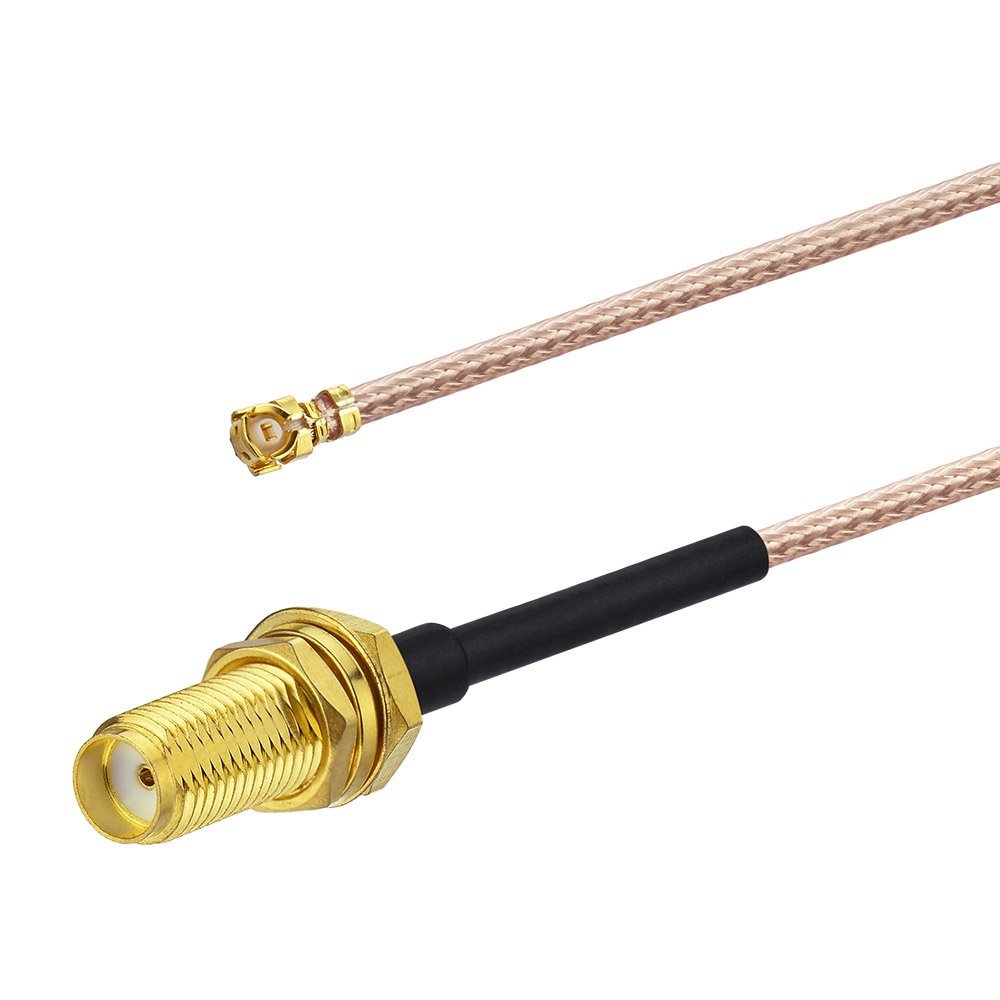According to the principle of adaptive filtering, the easy-to-implement minimum mean square error algorithm is mainly discussed and analyzed. By comparing the advantages and disadvantages of IIR structure and FIR structure filter, the adaptive filter of lateral FIR structure is used. In order to meet the real-time requirements of adaptive filtering, the system design of TMS320F28234 chip is adopted, and the hardware minimum system and software system are designed. Finally, the adaptive filter is realized by TMS320F28234. The simulation results show that the adaptive filter of this scheme has superior filtering effect and strong practicability.
0 Preface
Filtering is one of the most basic and extremely important technologies in the field of signal processing. Filtering techniques can be used to extract the desired signal from complex signals while suppressing noise or interfering signals for more efficient use of the original signal. Filters are used in many electronic circuit systems, and the technology is also complicated. Sometimes the strength of the filter directly determines the performance of the product, so the theoretical research and product development of the filter is very important.
Adaptive filters are relatively fixed filters. When the fixed design specification is unknown, or when the time-invariant filter does not meet the design requirements of the design, an adaptive filter is required. Strictly speaking, an adaptive filter is a nonlinear filter, so it does not satisfy the homogeneity and superposition conditions. If a fixed filter parameter is given at a given moment, its output signal is the linearity of the input signal. function. The adaptive filter is based on the prior knowledge of the signal and noise. The adaptive filter uses the filter parameters obtained at the previous moment to automatically adjust the current filter parameters to accommodate the unknown signal and noise. Or statistical characteristics that vary randomly to achieve optimal filtering, so it has a wider range of applications.
1 Overall design of adaptive filter for DSP
The system uses a digital signal processor to complete the design of the adaptive filter. The system is shown in Figure 1.

System working principle: The analog signal input in the overall design of the adaptive filter, the input signal is first anti-aliased, and then the analog signal is converted into a digital signal. According to the Nyquist sampling theorem, in order to ensure that useful information is not lost, the sampling frequency is at least twice the highest frequency of the input band-limited signal. After the ADC converts into a digital signal, the DSP chip pre-designed an adaptive filtering algorithm program to process the input digital signal. This adaptive filter is designed to have the ability to track signal and noise variations without knowing a priori knowledge of the input signal.
The signal processed by the DSP chip is converted into a continuous analog waveform by the DAC, and then smoothed to obtain the required analog signal.
1.1 Adaptive Filter Principle
The adaptive filter is a special Wiener filter that can automatically adjust its own parameters. It does not need to know the statistical characteristics of the input signal and noise in advance. It can gradually "understand" or estimate the required work. The statistical characteristics, and based on this, automatically adjust its own parameters to achieve the best filtering effect. Once the statistical characteristics of the input signal change, it can track this change and automatically adjust the parameters to optimize filter performance.
The parameter-adjustable digital filter structure in the adaptive filter can be a FIR digital filter or an IIR digital filter, or a lattice digital filter, and the input signal x(n) can be outputted by a parameter-adjustable digital filter. (or responsive to) y(n), which is compared with a reference signal (or expected response) d(n) to form an error signal e(n), and thereby adjust the filter parameters by some adaptive algorithm Finally, the mean square value of e(n) is minimized.
Figure 2 shows the general structure of an adaptive filter.

1.2 Adaptive filter structure
Compared with the adaptive FIR filter, the adaptive IIR filter has outstanding shortcomings. The main disadvantages include: the tendency of the adaptive IIR filter to be unstable; and the slow convergence rate. Therefore, a FIR filter is generally employed as the structure of the adaptive filter. The most straightforward implementation of the adaptive filter is the direct form of the FIR structure, but in this paper, the FIR lateral structure is used to design the adaptive filter. This structure contains only a finite number of memory cells determined by the number of delay stages, which can be attributed to a finite impulse response (FIR) or a transversal filter (Kallman). The input signal is delayed by a number of delay units, and the delay time can be continuous. The outputs of these delay units are sequentially multiplied by a stored set of weight coefficients, and the products are summed to obtain an output signal. This means that the output is a convolution of the input signal with the stored weight or impulse response. This filtering structure only contains zeros (because there is no recursive feedback unit), so to obtain the cutoff frequency characteristics, a large number of delay units are required. However, this filter is always stable and provides linear phase characteristics. Figure 3 shows the structure of the FIR transversal filter.

- SMA Jack (SMA-k type) to IPEX connector, cable length: 5cm / 1.96inch
- Regular SMA female connector, perfectly sized u.fl to SMA connector for Laptop electronics project to provide an external SMA antenna to Hubsan 501s controller, GPS Antenna 433Mhz antennas, Hubsan H501S antenna mod and so on.
- These RF connectors are come with all hardware necessary to mount it into the controller ,great application for DIY drone antennas
- U.FL connectors are tiny, Short thin wire pigtail, use to connect WiFi transceiver to antenna, great for replacement of TBS Unify and similar antenna systems .
- Package included: 2 x SMA female to u.fl extension Cable 5cm, comes with locking and nut
- Use for: PCI AVM PCB Wireless LAN Wlan Router Laptop Wifi Card Wireless LAN Devices, Wifi Radios with U.FL Connector, External Antenna Applications, Wireless OEM Applications, Wireless Infrastructure
- Compatible with: Proxim Orinoco, Mini-PCI, Components, EnGenius, NL-5354MP Plus, NL-3054CB Plus, NL-3054MP Plus, NL-2511MP Plus, Senao, NL-5354MP Plus, NL-3054MP Plus, WMP-3000; Zcommax, XG-900, XI-625, Ubiquiti, SR4, SR71-E, SR9; Router Board, 52n; Compex, WLM54 -SAG, WLM54G-23


Help you connect the device with SMA Male Connector and IPX Male Connector
This is a quality product, the plating is uniform, the cable is not too stiff, the threads are smooth with no burrs and it came with a crush washer and split lock washer and nut for each piece comes with needed locking and nutBeware, as all UFL connectors, if you don't put on with connector orthogonal to the pin access, you will bend the female side.
RF Cable
RF Cable,RF Coaxial Cable,Coaxial Assembly RF Cable,RF Pigtail Cable
Shenzhen Yetnorson Technology Co., Ltd. , http://www.yetnorson.com